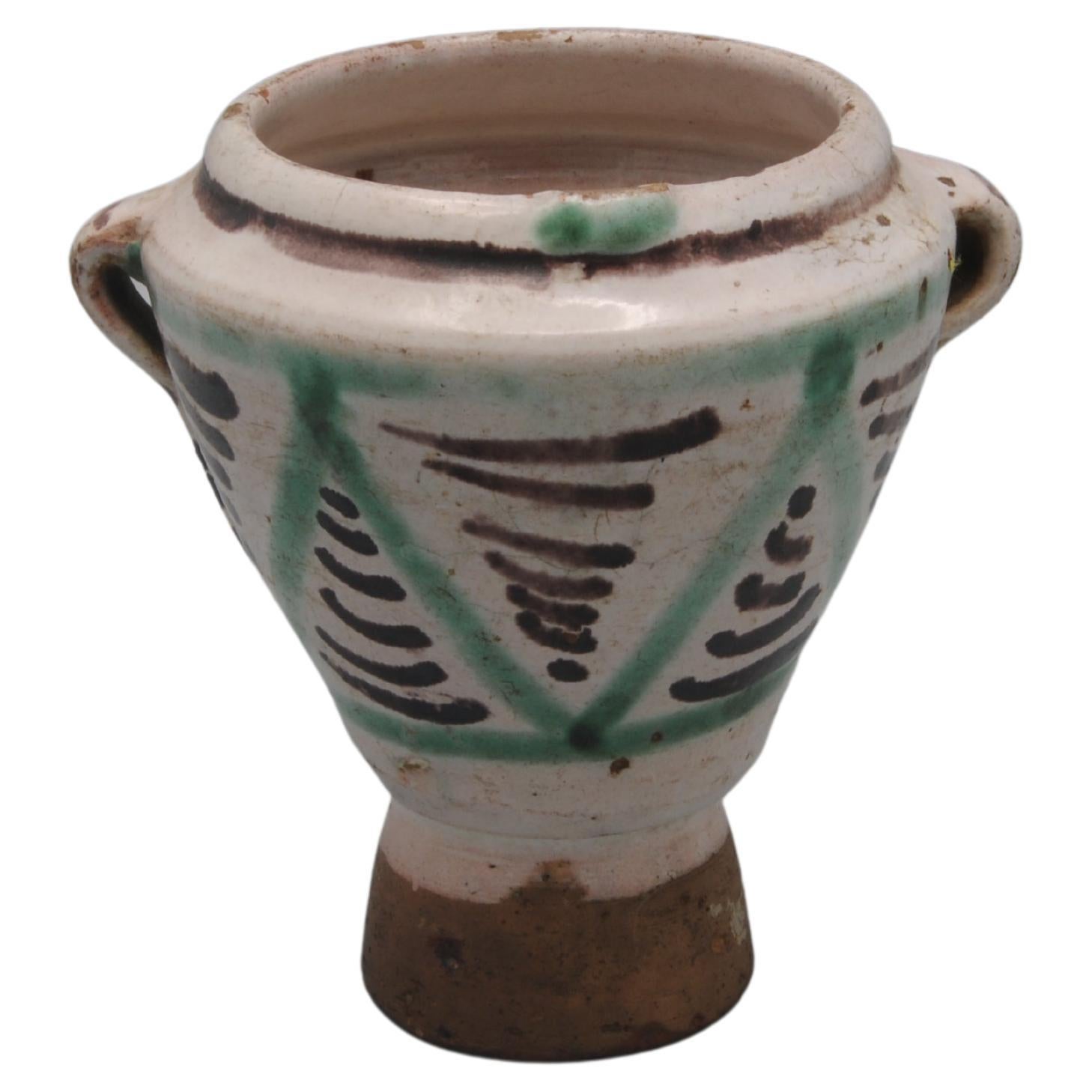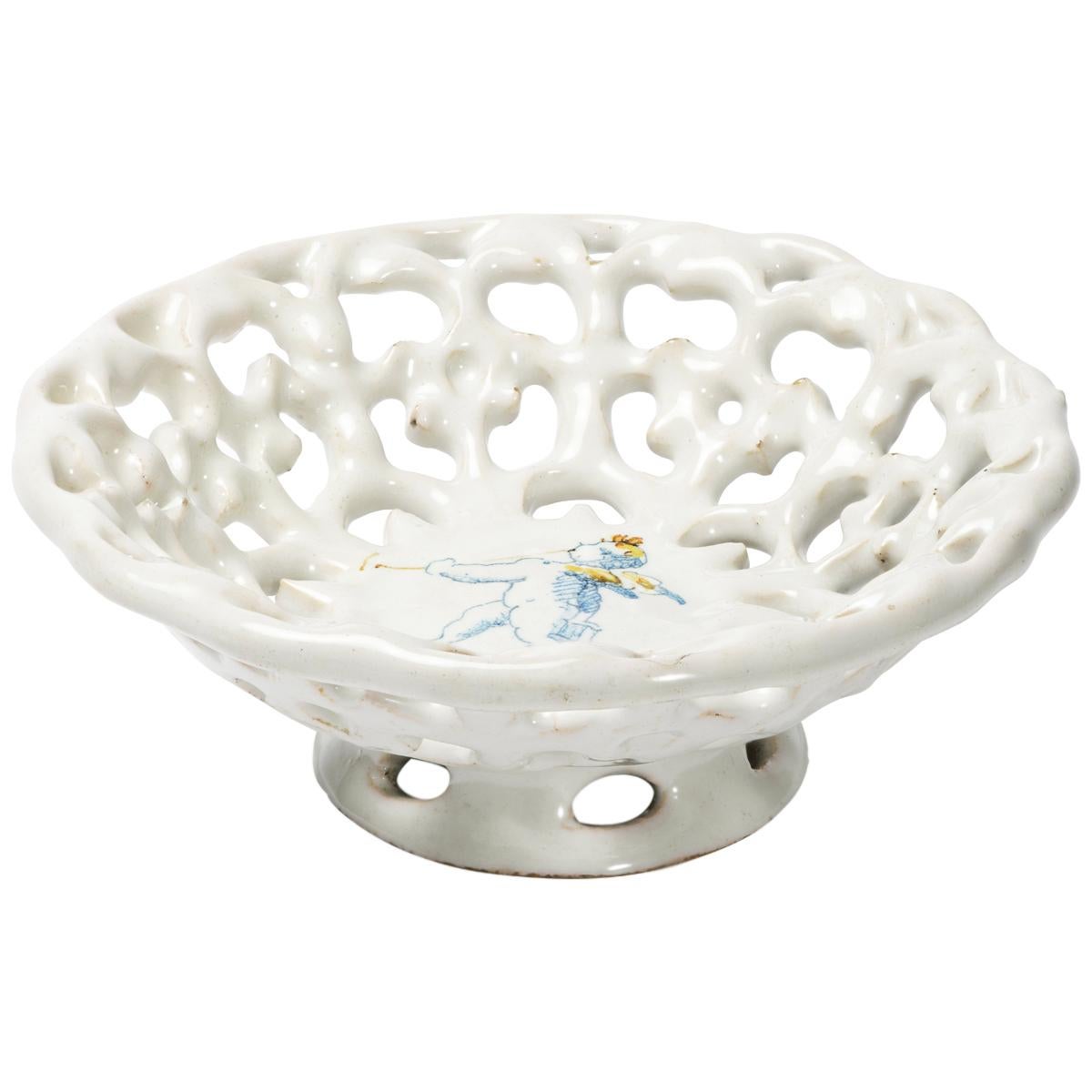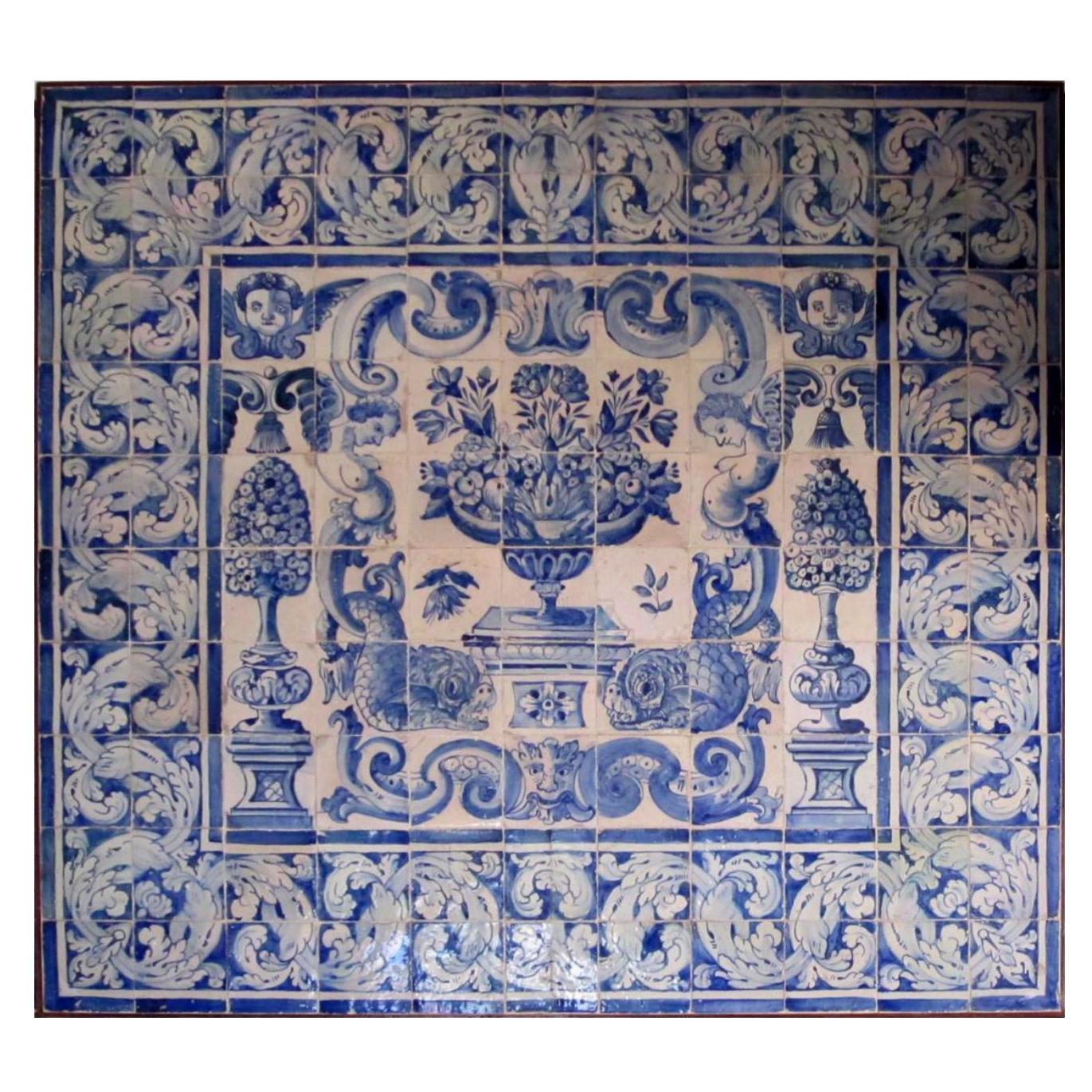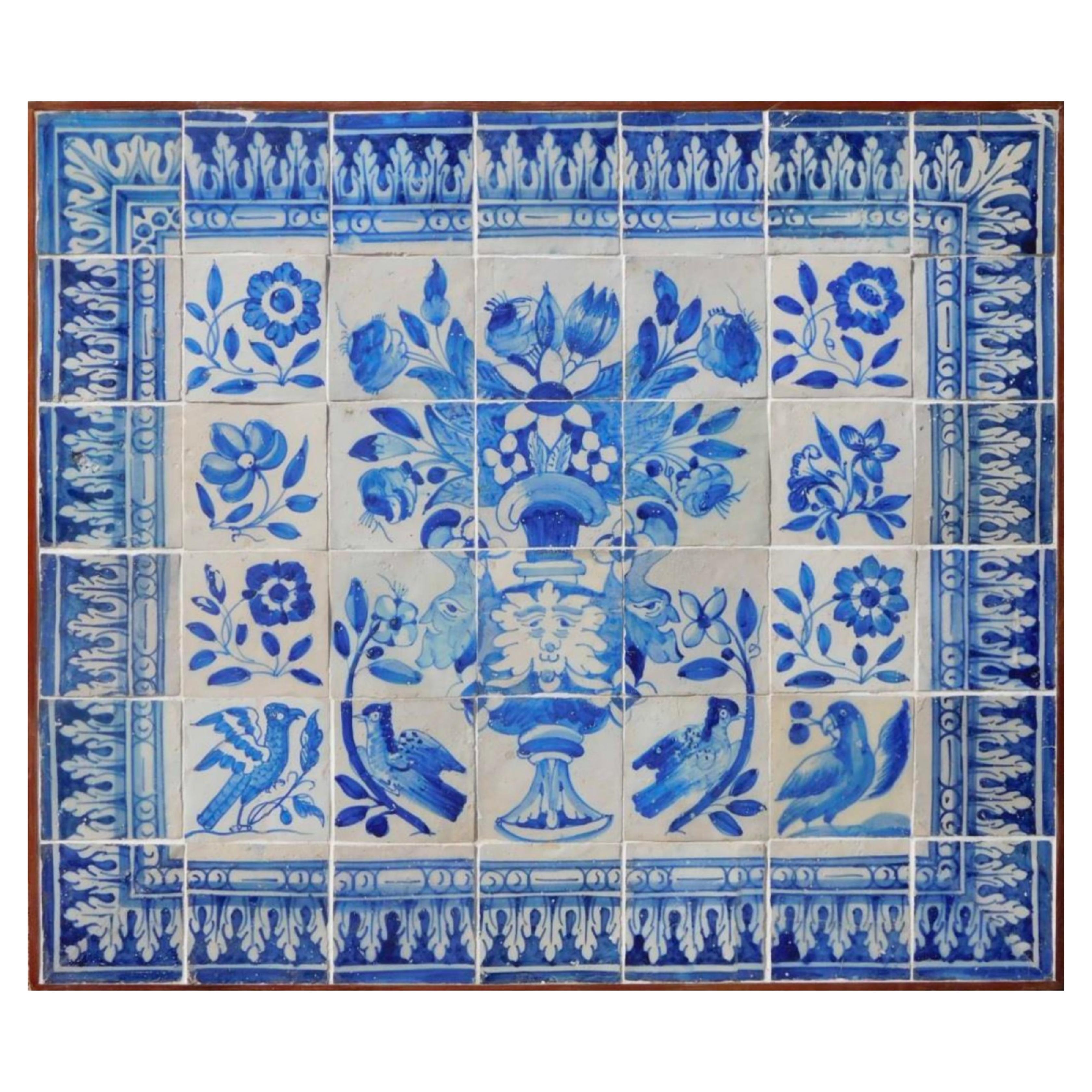Items Similar to Italian Maiolica Crespina a Compendiario Style, Center Italy, Late 17th Century
Want more images or videos?
Request additional images or videos from the seller
1 of 9
Italian Maiolica Crespina a Compendiario Style, Center Italy, Late 17th Century
About the Item
Italian Maiolica Crespina a Compendiario style, Central Italy, Late 17th century
This Crispina has a convex shape on the front and a concave shape on the back, resting on a small circular base. The overall shape is sober and light.
This type of style is called "Compendiario " "Compendiary" . The white surface that covered the biscuit had to be shiny and full-bodied, thanks to a very thick glaze that gave the majolica brilliance and brightness. The whites of the sixteenth and seventeenth centuries represent the exemplary decorative typology of this style.
- Dimensions:Height: 2.55 in (6.48 cm)Diameter: 12 in (30.48 cm)
- Style:Baroque (Of the Period)
- Materials and Techniques:Maiolica,Glazed
- Place of Origin:
- Period:Late 17th Century
- Date of Manufacture:circa 1690
- Condition:Wear consistent with age and use.
- Seller Location:CH
- Reference Number:1stDibs: LU977831080382
About the Seller
5.0
Recognized Seller
These prestigious sellers are industry leaders and represent the highest echelon for item quality and design.
1stDibs seller since 2013
36 sales on 1stDibs
Typical response time: 1 hour
- ShippingRetrieving quote...Ships From: Bissone, Switzerland
- Return PolicyThis item cannot be returned.
More From This SellerView All
- Italian Maiolica Pitcher with a Rampant Lion, Center Italy , Ca 1850Located in CHItalian Maiolica Pitcher with a Rampant Lion, Central Italy , Ca 1850 This unmarked Maiolica Pitcher with a cream white background is decorated on the front with a cobalt blue rampa...Category
Antique Mid-19th Century Italian Renaissance Revival Ceramics
MaterialsMaiolica
- Italian Cantagalli Maiolica Large Plate with family noble emblem, Late 19th C.By CantagalliLocated in CHItalian Cantagalli Maiolica Large Plate with family noble emblem, Late 19th Century During the 19th century Renaissance-Revival period the Cantagalli Maiolica and ceramic factory near Florence produced authentic copies of Renaissance Maiolica using traditional methods of tin glazing earthenware. This large Maiolica plate from the late 1800s is marked on the back with the symbol of the Rooster, which indicates that it was created by the Cantagalli ceramics factory. The plate is decorated in the center with the noble emblem of the house of Frederick Stibbert, a well-known late 19th century English/Italian collector of ancient weapons...Category
Antique Late 19th Century Italian Renaissance Revival Ceramics
MaterialsMaiolica, Ceramic
- Italian Maiolica La Bella Water Jug, 19th CenturyLocated in CHItalian Maiolica "La Bella" Istoriato Lustered red water jug, 19th century. Maiolica: The fired, but still unglazed pottery is covered with a white tin gl...Category
Antique Late 19th Century Italian Renaissance Ceramics
MaterialsCeramic
- Italian Neapolitan Battle Scene, Late 17th CenturyLocated in CHA fantastic late 17th-early 18th century Italian oil on canvas of a battle scene attributed to Francesco Graziani. Measurements are canvas only.Category
Antique Late 17th Century Italian Baroque Paintings
MaterialsCanvas
- Marble Sculpture of a Saint, Late 17th CenturyLocated in CHA late 17th century marble sculpture of a saint, possibly Central Italian. Monogrammed on the marble base "F G F."Category
Antique Late 17th Century Italian Baroque Sculptures
MaterialsMarble
- Spanish Baroque Walnut Desk Table, Late 17th CenturyLocated in CHSpanish Baroque walnut desk table, late 17th century. A rectangular single plank (1.25-inch thick) walnut top is sitting over 2 geometrical car...Category
Antique Late 17th Century Spanish Baroque Desks and Writing Tables
MaterialsWalnut
You May Also Like
- Teruel (Aragon) - Spanish Maiolica Mortar, 17th centuryLocated in DELFT, NLCeramic mortar produced at the Teruel pottery workshops in the 17th century. It has a truncated cone shape with three handles and a pourer. It is tin-...Category
Antique 17th Century Spanish Baroque Ceramics
MaterialsMaiolica
- Ancient Italian Renaissance Maiolica Crespina, Faenza, 1580 CircaLocated in Milano, ITCrespina Faenza, last quarter of the 16th century Maiolica painted in two colors, light blue and yellow, on a thick, rich layer of white enamel. It measures 2.24 in (5.7 cm) in height, 6.10 in (15.5 cm) in diameter. lb 0.55 (kg 0.25) State of conservation: mimetic restoration. The small cup has a raised central “umbone”, a perforated brim and a shaped rim. It rests on a high jutting foot. The "crespina" shape, in some inventories is cited as "tacce de frute" (fruit cups). It was particularly appreciated in the Renaissance and has variants based on the formal types and the different sizes. The decoration, made according to the dictates of the “compendiario” style, used few standardized colors: blue and yellow on a thick white and shiny enamel, deliberately chosen as the colour which was most reminiscent of silver. This choice derived from a trend in creative design of the era: the shapes used in the molds were often taken from metal objects. An idea which would last throughout the Renaissance. The work shows, in the middle of the “umbone”, a winged putto stepping forward while playing a long thin trumpet. The depiction of the putto is fully representative of the repertoire of the Faenza workshops of the sixteenth century. Some specimens with this type of decoration have been published in a volume by Carmen Ravanelli Guidotti: there appears the whole productive repertoire of this fundamental moment of transition between the taste for the “istoriato” style and the great simplification of decoration in the “compendiario” period. This style, in its simplicity, however, saw its expression in a rather varied collection of decorative subjects, including old-fashioned busts...Category
Antique 16th Century Italian Renaissance Ceramics
MaterialsMaiolica
- Turquoise Maiolica Italian Albarello Late, 1800sLocated in Roma, ITThis beautiful turquoise maiolica patterned Italian albarello (late 1800s early 1900s) was found in Palazzo Torlogna in Rome. Albarelli were ancient storag...Category
Antique Early 19th Century Italian Greco Roman Ceramics
MaterialsMaiolica, Ceramic
- 17th Century Portuguese " Azulejos " Panel " Vase "By Europa AntiquesLocated in Madrid, ES17th century Portuguese " Vase " Measures: 160cm x 146cm 110 tiles Important note: This panel is with the tiles restored 17th century. T...Category
Antique 17th Century Portuguese Baroque Ceramics
MaterialsCeramic
- 17th Century Portuguese "Azulejos" Panel "Vase"By Europa AntiquesLocated in Madrid, ES17th Century Portuguese " Vase " Measures: 73cm x 87cm 30 tiles Important note: This panel is with the tiles restored 17th century. The panel is delivered as if it were a pai...Category
Antique 17th Century Portuguese Baroque Ceramics
MaterialsCeramic
- 17th Century Portuguese " Azulejos " Panel " Vase "By Europa AntiquesLocated in Madrid, ES17th century Portuguese " Vase " 100cm x 85cm 42 tiles Important note: This panel is with the tiles restored 17th century. The panel is delivered as if it were a painting with a wo...Category
Antique 17th Century Portuguese Baroque Ceramics
MaterialsCeramic
Recently Viewed
View AllMore Ways To Browse
Antique Italian Glass
Silver Convex
Antique Glass Light Covers
Silver Sake
Stone Floor Tile
Blue And White Ironstone
C 142
Antique Tile Floors
Miniature Ceramics Swedish
Trompe L Oeil Plate
Blue And White Canton Porcelain
Blue And White Imari Plate
Hanging Majolica
Majolica Service
Majolica Shell And Seaweed
Antique Glass Wall Tiles
Ceramic Coaster
Spanish Lebrillos





